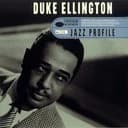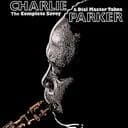The F Bebop Dominant Scale in Jazz Context
The F bebop dominant scale follows the interval formula of 2-2-1-2-2-1-1-1 semitones, producing the notes F, G, A, B♭, C, D, E♭, and E. The chromatic passing tone (E natural) creates an eight-note structure that ensures chord tones fall on strong beats during eighth-note improvisation. This makes the bebop dominant scale particularly effective for creating authentic bebop lines that emphasize harmonic structure while maintaining melodic fluidity—a technique developed by bebop pioneers like Charlie Parker, Dizzy Gillespie, and Bud Powell.
Application in Blues and ii-V-I Progressions
The F bebop dominant scale serves as a primary improvisational tool over F7 (F dominant seventh) chords, particularly in blues progressions where F7 functions as the I chord in an F blues. The scale provides a sophisticated alternative to the blues scale, maintaining the dominant seventh flavor while adding bebop chromaticism. In jazz ii-V-I progressions resolving to B♭ major (Cm7-F7-B♭maj7), the F bebop dominant scale creates smooth voice leading and authentic bebop language. Famous tunes like "Blue Bossa" and "Satin Doll" feature F7 chords where this scale shines.
Piano Practice and Technical Mastery
For effective piano practice of the F bebop dominant scale, use consistent fingering: right hand ascending from F: 1(F)-2(G)-3(A)-4(B♭)-1(C)-2(D)- 3(E♭)-1(E)-2(F). Set your metronome to 60-80 BPM and practice in strict eighth notes, emphasizing chord tones (F, A, C, E♭) on downbeats. Progress to triplets, sixteenth notes, and various rhythmic groupings. Practice hands separately first, then together in parallel and contrary motion to develop bilateral coordination and dexterity.
Harmonic Applications and Chord Progressions
In the key of B♭ major, the progression Cm7-F7-B♭maj7 provides perfect context for the F bebop dominant scale: play C Dorian over Cm7, switch to F bebop dominant over F7, and resolve to B♭ major. The scale also works in F blues contexts and modal jazz settings where F7 harmony is sustained, allowing extended exploration of bebop chromaticism.
Relationships to Other F Scales
The F bebop dominant scale shares its foundation with the F Mixolydian mode, differing only by the E natural chromatic passing tone. The F bebop major scale serves as the parallel bebop scale. Jazz pianists develop fluency with multiple F dominant scale options—bebop dominant, Mixolydian, altered, whole tone—learning to choose based on harmonic context and desired effect.





